The Snowball Effect
October 2025 - A classic case of one thing leading to another.. It all started when I thought I should try the PiTubeDirect Interface cartridge in a standard Electron/Plus 1 system.
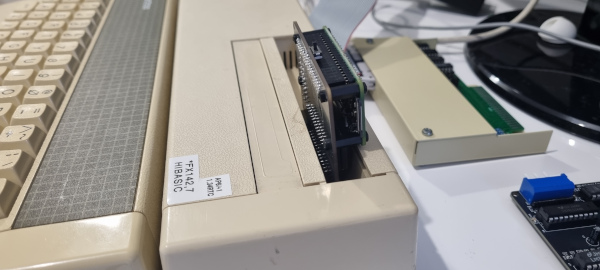
I looked out the Electron I wanted to use but I didn't have the space to set it up. I then looked round my room and thought that if I tidy away the Maplin synthesiser I could move my new Raspberry Pi500+ on to that desk. After an afternoon tidying, dusting and moving the Pi500+ I had room to set up the Electron.
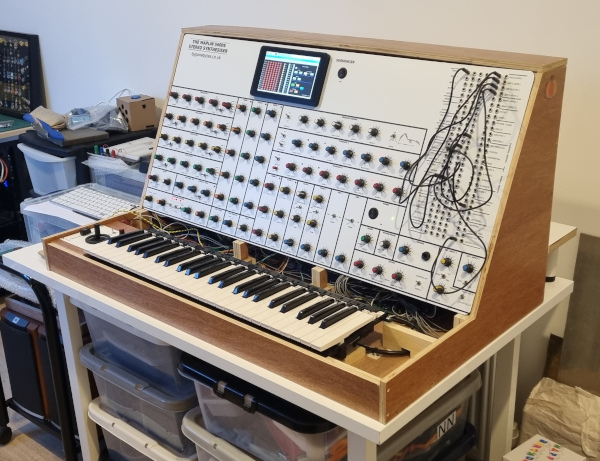
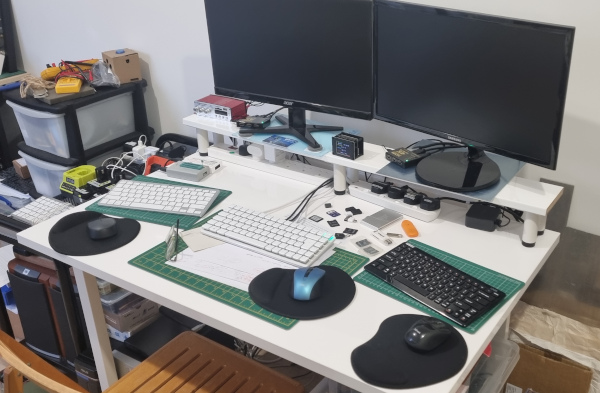
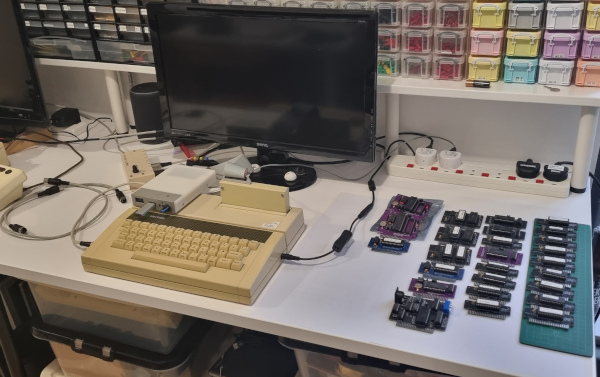
The Electron I chose has a relatively new AP6 installed, this is a Plus 1 internal ROM expansion board with a RTC (Real Time Clock). A year or so ago I had been trying out some Beta software written by !FOZ! on Stardot that used the RTC to bring up the time and date on a Break at the top of the screen (it does do a bit more than that!). Now, when I switched on the Electron there was no Clock, I then set about replacing the coin cell that backed up the time and date. This involves taking the Plus 1 apart and removing the AP6 as the battery is on the underside.
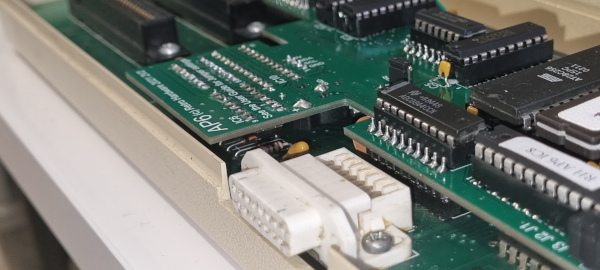
After all that it still didn't display the time etc. That was when I remembered the software was in ROM and I probably just used SRAM to test it out.
I went on to Stardot to look for the ROM software and found it's now available in various formats one of which was inside the Plus1/AP6 ROM. This is great as I could update my Plus 1 ROM and then I can forget about using a separate ROM bank. I took the Plus 1 apart again and installed the new ROM, the clock was up and running again.
This however led onto losing the Treecopy utility contained in the earlier Plus 1 ROM - not a problem, I could simply use it directly from the Econet File Server but this Electron isn't connected to the File Server. I could re-populate the test Econet card I had made when I added Econet into the clone. With that done I didn't have enough sockets to plug in a third computer to the PiEconetBridge as both of it's sockets are used by the Clone and the BBC B+!
So the next thing to do was build a small Econet Hub. I designed a simple PCB the size of a Raspberry Pi HAT, the perfect size to fit six sockets, one to connect to the PiEconetBridge and five for possible clients. There are many other options available for hubs but I thought I'd give this try:
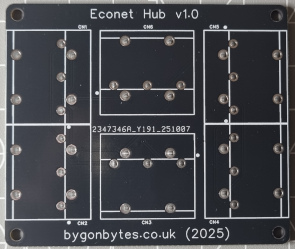
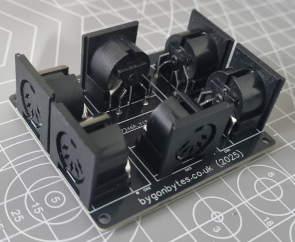
Testing the Hub.
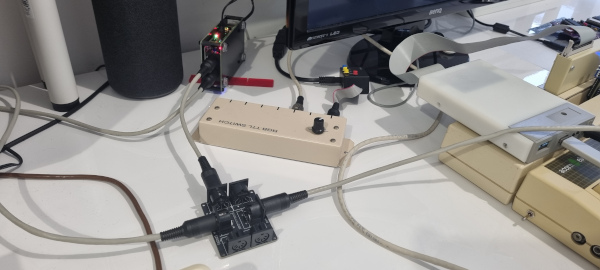
Building it onto the PiEconetBridge.
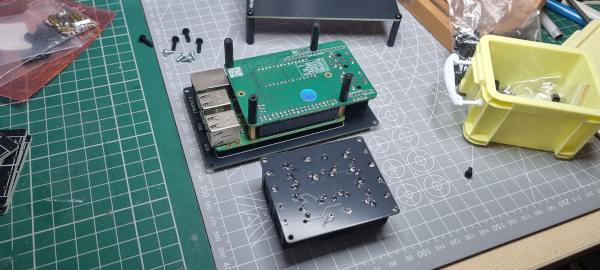
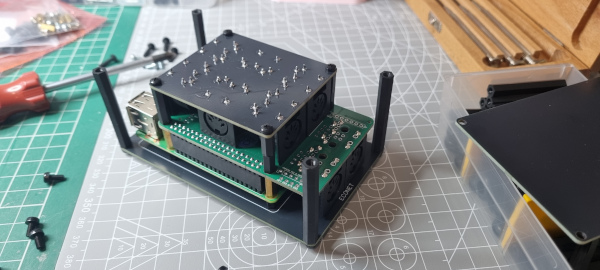
It makes for a chunky brick..I may reconsider having the two together, I could remove it and hide the Hub down the back of the desk..
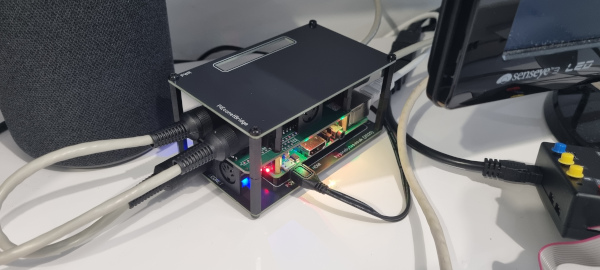
The Electron now on Econet.
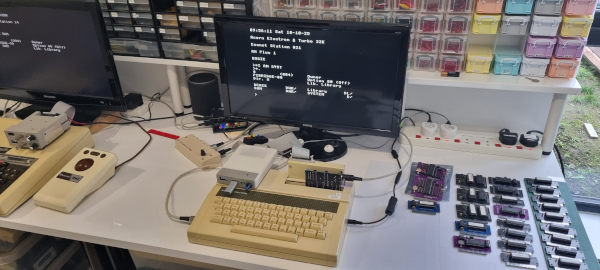
All three machines networked.
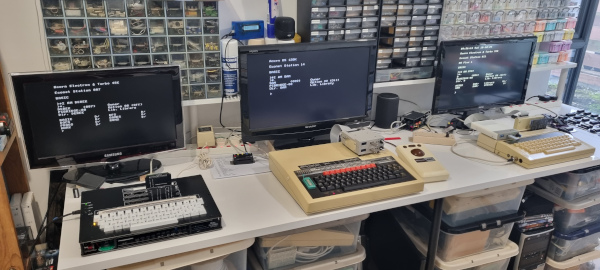
I realise that I've had the luxury of having four cartridge slots and now two seems to be very limiting so I don't think the Econet card will be used much on this Electron but just having it available for the odd occasion will be useful.
With all that done it was time to get back to the original problem and that was to have the PiTubeDirect Interface Cartridge fit neatly into the Plus 1. The cartridge is prevented from sitting fully down into the slot due to the Raspberry Pi hitting the case (it fits perfectly in the Clone as it's a bit slimmer) so I extended the PCB by just 2.5mm (1/10 inch) - hopefully that's enough for it to be seated properly.
This it how the first board sits in the Clone. Firmly in place with a gap of a few millimetres between the case and the Raspberry Pi.
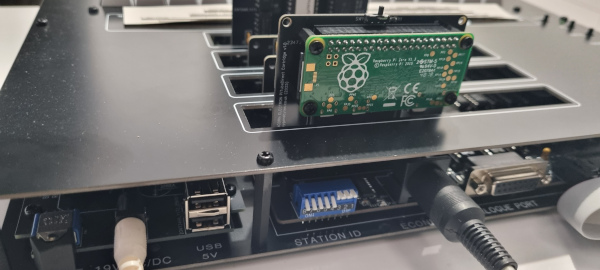
and this is how it sits in the Plus 1, tight up against the case and the edge connector only just being gripped.
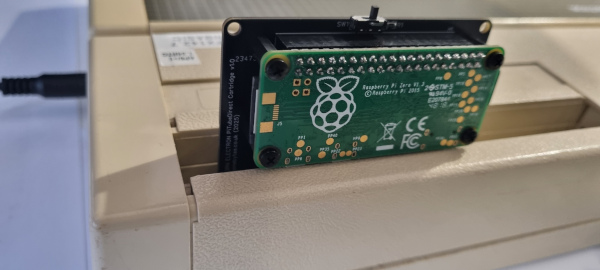
The original board to the left and the slightly extended on on the right.
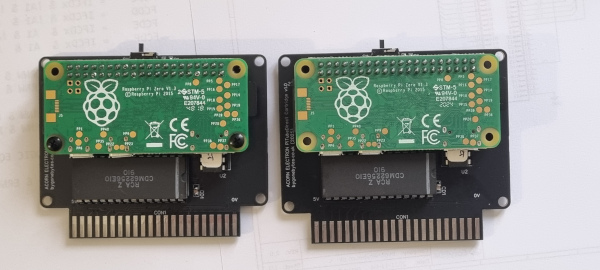
The extended board in the Plus 1..and the Raspberry Pi still touches the case..but this time only just, it is firmly in the edge connector.
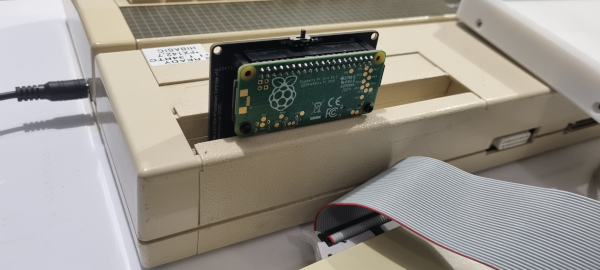
And finally the second processor working away happily in the Plus 1.
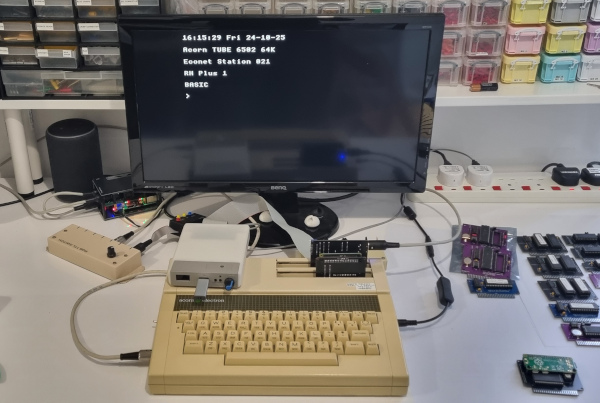
Epilogue
Everything didn't go as planned when I assembled the extended card. I had used different 74LVC245 parts from the prototype and I had a strong suspicion that they may be fake. So I checked them out on the bench using a PSU and a few pull-up resistors - and they worked perfectly. I eventually found the problem...I had programmed the Lattice 16V8 GALS using the wrong chip selection in the TL866II programmer! Even with the wrong make IC selected it still went through the program/verification OK. I was lucky to have found that one :)
-END-